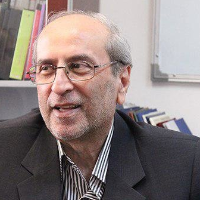Social Construction of Disability in Pre-Revolutionary Cinema and Iran's 60s (A Case Study of Movies in the World was Alien and A Little Bird of Happiness)
Cultural and historical changes are the basis of social events with a variety of characteristics that affect the media–communication structure of a country at specific timescales. Accordingly, we see a bilateral relationship between history, the culture of specific times with discourses and representations as a constructive factor in building different images in the media. Given the function of mass media in reflecting the narratives and experiences of the social minorities, it is essential to have a critical look at the field of visual media, especially cinema. The cinema has become a communication tool with its visual features and its integration with verbal and discursive features, which is more capable of reflecting the living and social conditions of minorities in a society than other media. Among the marginal groups that have been marginalized through the mechanisms of media discourse are disabled people. With the help of creating discursive structures and procedures for reflecting the lives of people with disabilities, cinema helps to create a discursive order in this field. Therefore, with regard to recognizing how to deal with the field of disability in Iranian cinema, the main purpose of this research was to provide a comparative discursive analysis and constructivist of the cinema of disability before the revolution and the sixties of Iran.
The main method used in this research was qualitative research method of critical discourse analysis using Ruth Wodakchr('39')s cultural–historical discourse technique. Discourse is a social outcome that raises the importance of the concept and issue of power. Discourse activities have major ideological effects as they help to produce and reproduce unequal power relations between social classes, as well as minorities and ethnic–cultural majority, through the ways and means of representing objects and positions people do. The method of sampling in this research was purposefully unpredictable, with one discussed in 1960 and 1961 disability cinemas and one in the disability cinema of the 1962, using the Roth Wodakchr('39')s linguistic strategies. Wodak believes in the critical approach of discourse to historical, social and cultural foundations in the formation of a category. Since the purpose of this study was to identify the mutual and structuralism of the phenomenon of disability and cinema as a tool for social reflection of disability conditions in decades before the revolution and the 60s, the language features of films were identified. A historical discourse based on the sociological and cultural context of the cinema was presented.
The most important conceptual categories that were found in the social construction of the cinema of disability before the revolution were the lack of activism of the disabled in society, social isolation. On the other hand, the cinema of the 1962 on the presentation of consistent character with the people around him and with the power of learning and communication. Change in the socio–cultural discourse approach Disability category in the cinema is evident from the medical–biological paradigm to the social and structuralism paradigm. Given that, the traditional framework of disability and disability emphasizes the nature of medical disability, focusing on individual–centered disabilities. Meanwhile, the new paradigm defines the medical structure of the disability and, by redefining the disability, defines them as a community–built problem that is being rebuilt.
The cinema of disability in Iran, based on the social constructivist approach, depicts disability in the form of critical discourse analysis, and the institutions and actors involved in the development of disability discourse in the decades before and after the revolution played a significant role. The most important constituent institutions of disability discourse in the pre–revolutionary cinema, family and society, and in the cinema of the sixties, was the family, society and the institution of education. Considering the issue of teaching in the field of learning the disabled and the psychological support of teachers in this field are significant features of disability discourse in the 1962.
- حق عضویت دریافتی صرف حمایت از نشریات عضو و نگهداری، تکمیل و توسعه مگیران میشود.
- پرداخت حق اشتراک و دانلود مقالات اجازه بازنشر آن در سایر رسانههای چاپی و دیجیتال را به کاربر نمیدهد.


